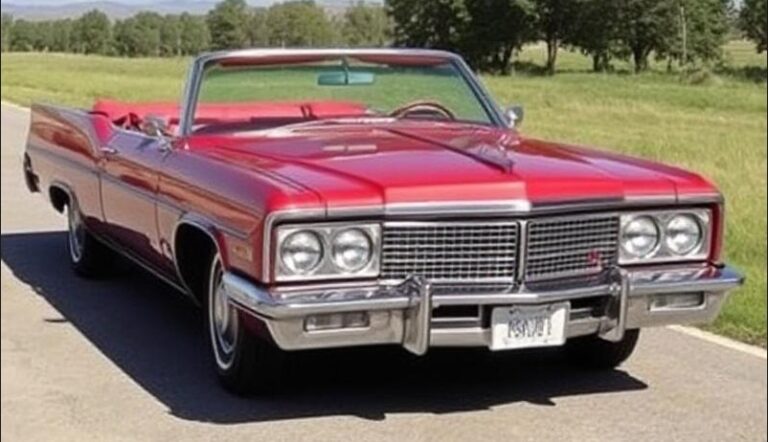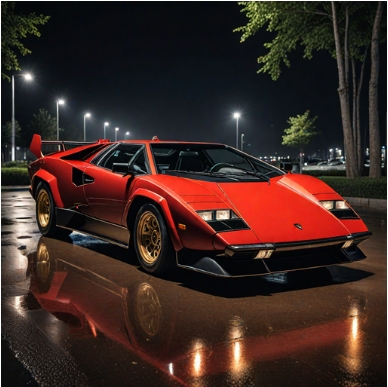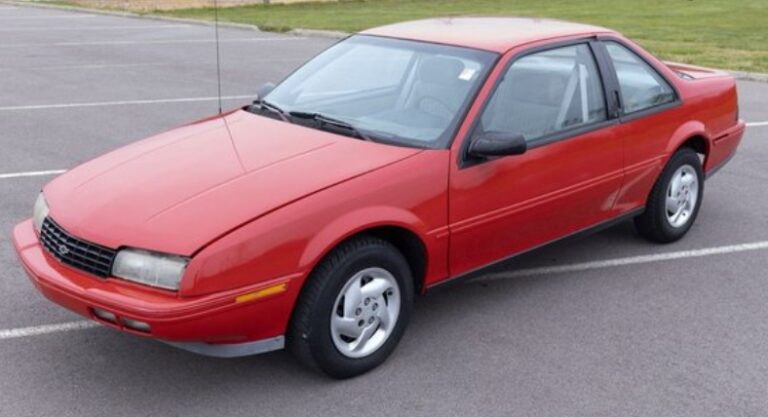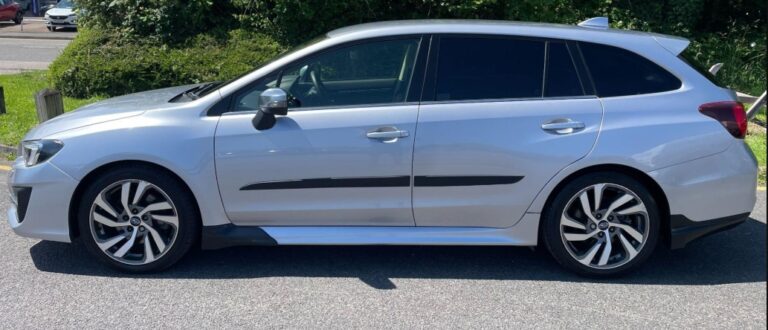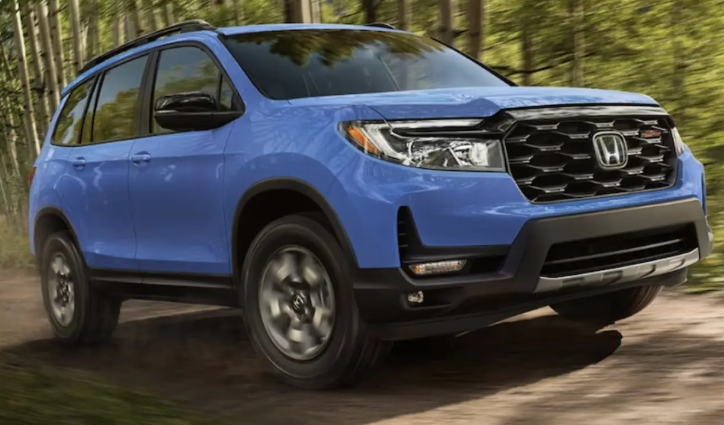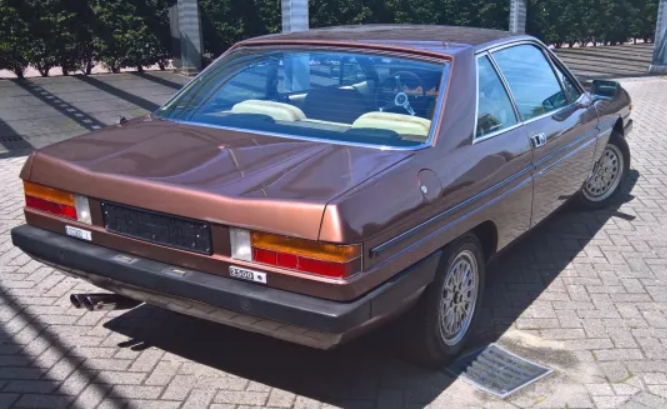The Aristocrat of the Highway: An Evolution of the Holden Statesman
The Holden Statesman was more than just a long-wheelbase version of the standard Commodore; it was an aspirational statement. For decades, it represented the pinnacle of Australian automotive luxury, a vehicle that blended the robustness of local engineering with the desire for executive comfort. From its birth in the late 1960s through to its final iteration before the Holden brand ceased local manufacturing, the Statesman charted a fascinating course through automotive history, mirroring Australia’s own shifting tastes in what constituted a premium family and business conveyance.
This exploration delves into the factual evolution of the Holden Statesman, detailing its production years, the distinct model series, and the trim levels that adorned this flagship Australian sedan.
The Genesis: The HZ and the Birth of a Standalone Brand (1971–1984)
While Holden had flirted with larger, more luxurious sedans before, the official lineage of the Statesman nameplate as we recognize it truly began in the early 1970s. The objective was clear: to compete with imported luxury vehicles by offering spaciousness, superior refinement, and powerful V8 options, all built on familiar, reliable underpinnings.
The Statesman DeVille/Statesman Caprice (HQ Series, 1971–1974)
The original Statesman line was introduced in 1971, based on the existing HQ Holden platform, but significantly stretched for interior space. It was positioned above the Kingswood/Premier models.
- Models & Trims:
- Statesman DeVille: The entry-level luxury model, featuring better interior trimmings, plush seating, and standard V8 engine options (though six-cylinder availability existed initially).
- Statesman Caprice: The top-tier offering, boasting vinyl roofs, power steering, air conditioning (often optional on DeVille), and superior upholstery, usually reserved for the larger 5.0L V8 engine.
The HJ, HX, and HZ Series (1974–1980)
As the base Holden lines evolved through facelifts, so too did the Statesman. These models retained the core luxury philosophy but incorporated updated styling and, crucially, adapted to new emission and safety regulations.
- HJ Statesman (1974–1976): Featured minor cosmetic updates. The Caprice maintained its dominant luxury position.
- HX Statesman (1976–1977): A very brief run characterized by the introduction of required emission controls, which notably impacted the local V8 performance figures.
- HZ Statesman (1977–1980): A significant facelift brought a more angular, modern look. This series saw the introduction of the Statesman DeVille and the Caprice as the flagship models. The HZ was the final large, body-on-frame Statesman.
The WB Series (1980–1984): The Last of the RWD Titans
The WB Statesman series, launched in 1980, represented the final iteration of the traditional, large, rear-wheel-drive Australian executive car. Built on a heavily modified, stretched HZ platform, the WB was designed to feel more contemporary than its predecessor.
- Models & Trims:
- Statesman DeVille: Standard luxury, often equipped with the 4.2L V8.
- Statesman Caprice: The ultimate expression of the WB, featuring velour trim, full instrumentation, and highly desirable standard equipment.
Production of the WB ceased in 1984 as Holden shifted focus entirely to the smaller, but increasingly sophisticated, Commodore platform, leaving a gap in the market that would not be filled for several years.
.

.
The Renaissance: Rebirth on the Commodore Platform (1990–2006)
The market clearly missed a dedicated, larger Holden. In 1990, Holden revived the Statesman nameplate, strategically fitting it onto a significantly stretched and upmarket version of the popular VN Commodore platform. This marked a return to the Statesman as a distinct model line, separate from the standard Commodore sedan offerings.
The VN/VP Statesman (1990–1993)
The VN Statesman, launched in 1990, was immediately recognizable by its extended rear doors and substantial C-pillar, offering limousine-like rear legroom.
- Models & Trims:
- Statesman (Base Model): This was the new entry point, offering luxury features (like central locking and power windows) that were optional on top-spec Commodores. Usually equipped with the 3.8L Ecotec V6.
- Statesman DeVille: Enhanced trim, often featuring alloy wheels and better sound insulation.
- Statesman Caprice: The pinnacle, often including features like leather upholstery options, climate control, and standard V8 availability (though the V8 was phased out mid-run due to market demand shifts).
The VP Statesman (1991–1993) brought minor cosmetic updates, improved suspension tuning (crucial for the longer wheelbase), and the introduction of ABS.
The VR/VS Statesman (1994–1997)
Facelifts in 1994 (VR) and 1995 (VS) saw the Statesman adopt the updated styling and mechanicals of the Commodore range, most notably the introduction of superior engine management systems and better ride quality.
- Models & Trims (VR/VS): The nomenclature remained consistent: Statesman, DeVille, and Caprice. The VS series saw the V8 engine briefly reintroduced in limited numbers, usually in the Caprice, before the focus settled firmly on the refined Ecotec V6. A key feature of the VS was the increased standardisation of safety features.
The Global Player: Statesman as the Long-Wheelbase Export (2000–2006)
With the launch of the VT series in 1997, Holden began significant restructuring, culminating in the Statesman being rebranded for international markets, often as the Holden Caprice. However, domestically, the traditional hierarchy remained, albeit with a clearer distinction.
The WH Statesman (1999–2003)
The WH Statesman was perhaps the most significant technological leap since the original HZ. Built on the advanced VT/VX/VY platform architecture, it offered vast improvements in safety, crash structure, and overall refinement.
- Features: The WH introduced independent rear suspension (IRS) across the range, significantly improving handling, and featured modern dual-zone climate control systems.
- Models & Trims:
- Statesman: The entry level, powered by the 3.8L V6.
- Statesman International: An appealing mid-range model introduced for the WH series, offering near-Caprice levels of comfort but without the flagship V8 or top-tier leather options.
- Caprice: Designated the premium tier, retaining the V8 option (5.7L Gen III LS1) and standard leather appointments.
The WK/WL Statesman (2003–2006)
The final iterations of the long-wheelbase sedan under the dedicated Statesman badge were the WK and WL series, based on the VY/VZ Commodore. These models refined the technology introduced in the WH.
- WK/WL Updates: These updates focused heavily on refinement, most notably the introduction of the 5.7L LS1 V8 as an official, widely available option again, particularly in the Caprice. The styling became sharper, adhering to Holden’s contemporary design language.
In 2006, Holden made a strategic decision: the independent Statesman nameplate was retired. Its role was absorbed entirely by the Holden Caprice, which became the sole long-wheelbase luxury offering, aligning the top-tier model with its export badge counterpart.
The Statesman Legacy: A Summary of Australian Ambition
The Holden Statesman endured through numerous platform changes—from the heavy-duty, chassis-based luxury of the WB to the sophisticated, FWD-derived architecture of the WH. Its evolution reflects key themes in the Australian automotive industry:
- The Pursuit of Space: The constant focus was on rear legroom, positioning the car as ideal for chauffeuring or accommodating large Australian families in supreme comfort.
- The V8 Question: The Statesman series was intrinsically linked to the availability of powerful Australian-made V8 engines, a feature that defined its premium status until modern engine technology saw the V6 dominate the volume models.
- The Prestige Tier: It served as Holden’s crucial bridge between mass-market sedans (Commodore) and true high-end European imports, offering substantial luxury and presence at a nationally competitive price point.
While the nameplate itself eventually gave way to the Caprice, the 35-year run of the Holden Statesman solidified its place in automotive folklore—the steadfast, comfortable aristocrat of the Australian highway.
| Series | Production Years | Key Body Style | Flagship Model Variant |
|---|---|---|---|
| HQ | 1971–1974 | Body-on-Frame | Caprice |
| HJ | 1974–1976 | Body-on-Frame | Caprice |
| HX | 1976–1977 | Body-on-Frame | Caprice |
| HZ | 1977–1980 | Body-on-Frame | Caprice |
| WB | 1980–1984 | Body-on-Frame | Caprice |
| VN/VP | 1990–1993 | Stretched FWD (Commodore Base) | Statesman Caprice |
| VR/VS | 1994–1997 | Stretched FWD (Commodore Base) | Statesman Caprice |
| WH | 1999–2003 | Stretched FWD (VT/VX/VZ Base) | Caprice |
| WK/WL | 2003–2006 | Stretched FWD (VZ Base) | Caprice |


